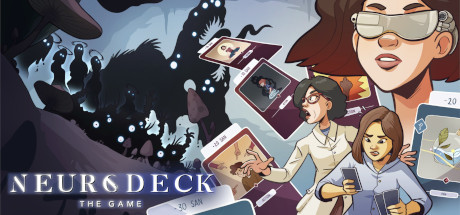Face your fears, one deck at a time
Type: Singleplayer
Genre: Roguelite, Deckbuilder
Developer: TavroxGames
Publisher: Goblinz Publishing
Release date: 18 Mar, 2021


Deckbuilding roguelites are all the rage right now, from Slay the Spire to Doors of Insanity to Deck of Ashes, it’s a crowded market. The concept behind these games are simple, you’re trying to build a deck of cards that’s as good as possible with new cards being presented to you over the course of a playthrough. If you lose you’ll have to start all over again with a small set of starter cards.
Neurodeck is mechanically very similar to those other games, if a bit simpler and more streamlined, but what makes it stand out from the other games of its kind is its theme. Where most deckbuilding rougelites are either fantasy or sci-fi themed, this one is about mental health. You’re battling phobias and make a deck of cards that mostly consists of everyday things and actions, like spooning with someone you care about or having a happy dog.
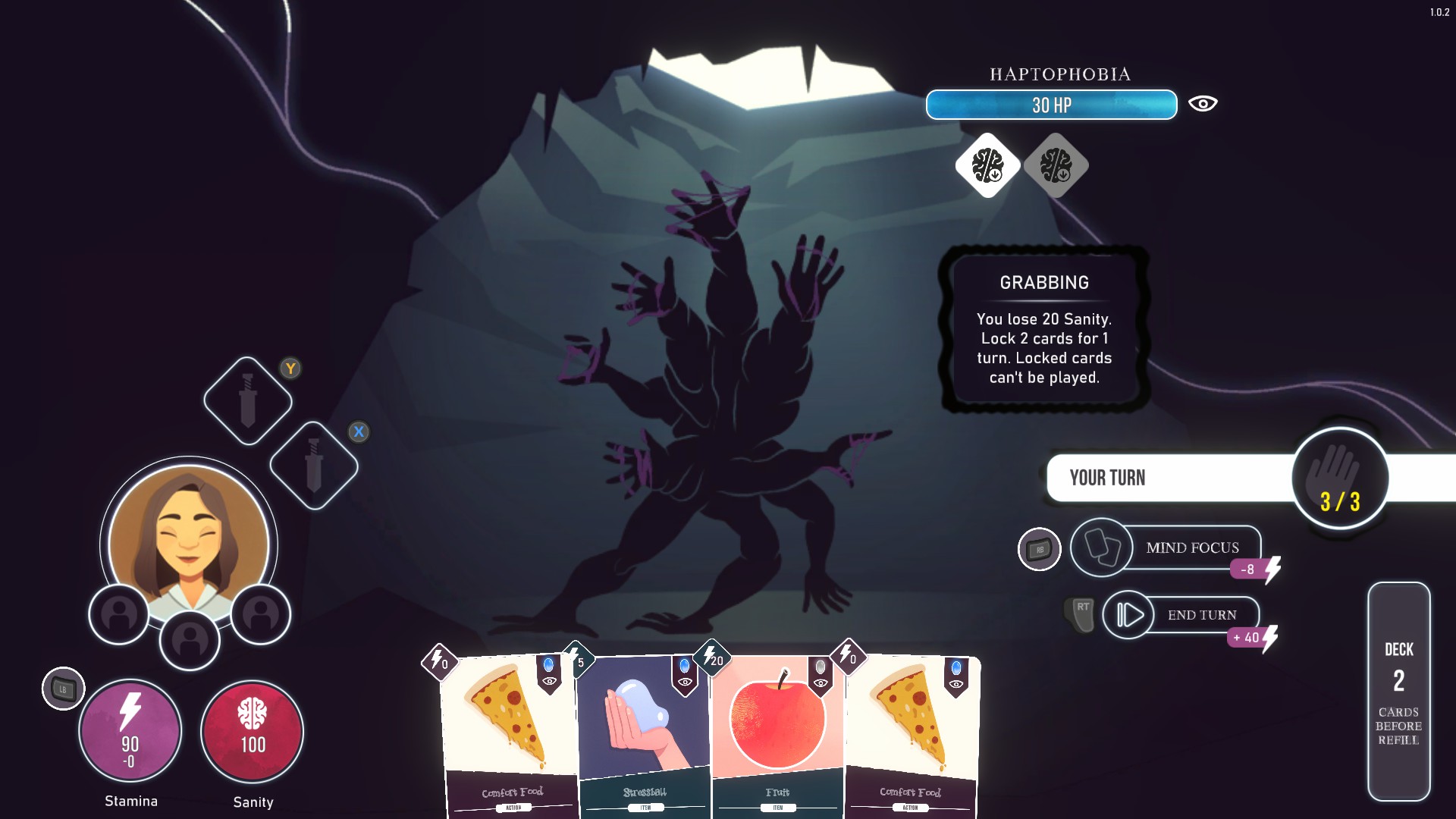
Story & Setting
In Neurodeck you’re exploring the subconscious of two people, Lei a young woman who left her country and is now living in a new and unfamiliar place and Jupiter, an older woman who’s children have left home and who’s now trying to adapt to her new life without all the people around her.
As you explore their minds new cards related to them will be given to you. Both characters have three different emotions that you need to explore, with varying cards being available depending on the emotion that fits in with the overall theme of the character. Although the cards themselves can have weird effects that don’t quite match up with what they’re supposed to represent. Why is back pain going to help you overcome a phobia?
The main thing you’ll be doing is battling different phobias. Both characters are facing the same phobias and they seem to have a lot of them, everything from arachnophobia (fear of spiders) to theophobia (fear of religion). Every phobia has a small in-game description.
When not fighting phobias you’ll be given other choices for what to do, like taking a personality test that end up giving some kind of permanent perk based on your results, get permanent stat upgrades which also come with a short story about some event in the characters life and so on. There’s not a whole lot of story in the game though and it would have been nice to get more of an introduction to the two characters.
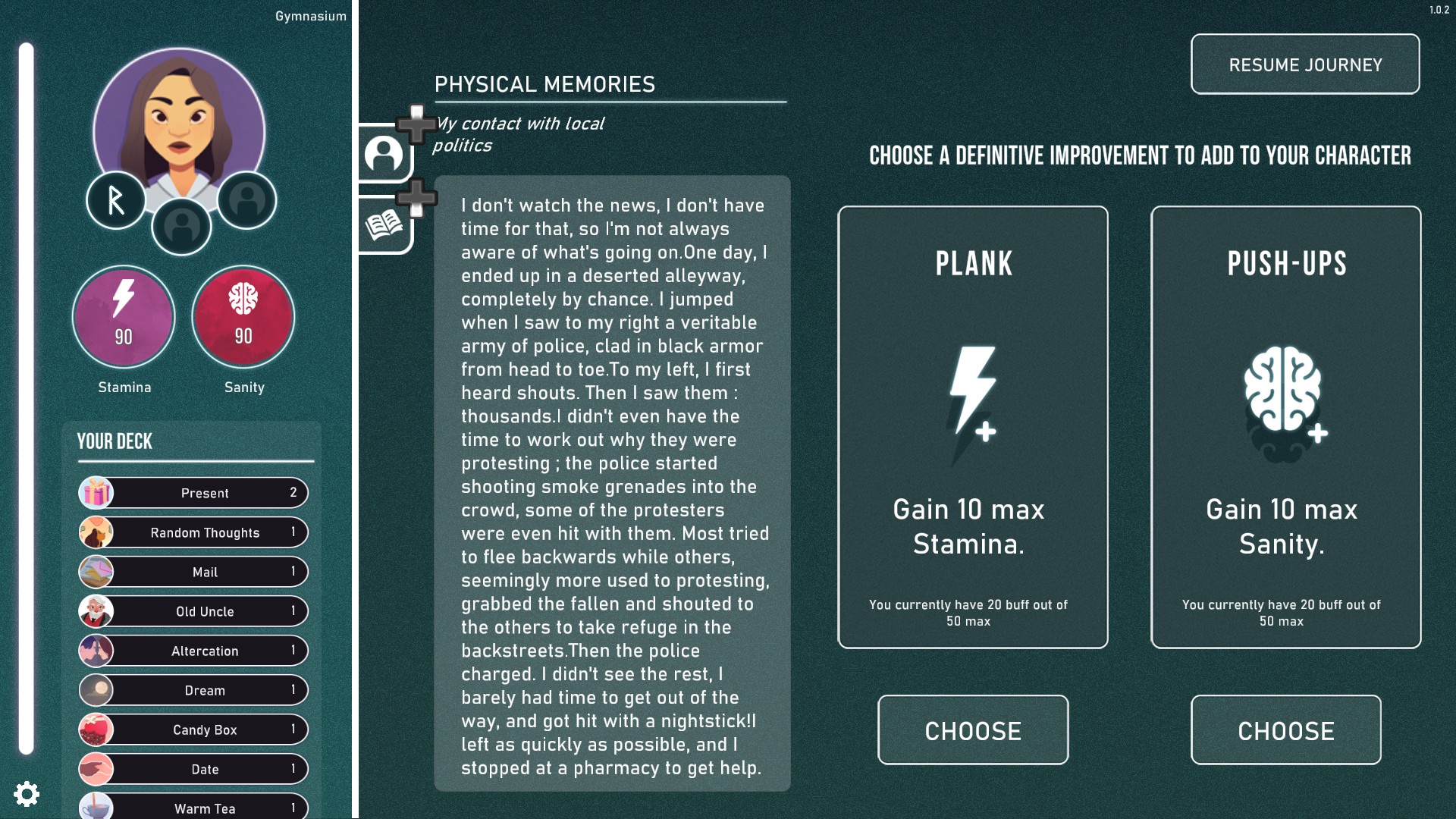
Presentation
There’s no denying that Neurodeck has some outstanding art. Every phobia has a memorable look to it and it’s well animated. There’s something deeply unsettling about most of these designs, as it should be, and their animations help reinforce this. The sound effects can be equally disturbing and they help to give the feeling that something is not quite right here. The art outside of the phobias is less unsettling but still looks good. Both the card art and the character and survey art are consistent and their normality contrasts well with the twisted phobias. The UI itself outside of fights have a dark and somewhat clinical feel to it.
The music is for the most part calm though with a somewhat sinister undertone which suits the game well. As for the sound effects, attack sounds have a good weight to them while other sound effects are more subdued. The sound design is not quite as strong as the art, but it does the job well enough and it’s not intrusive.
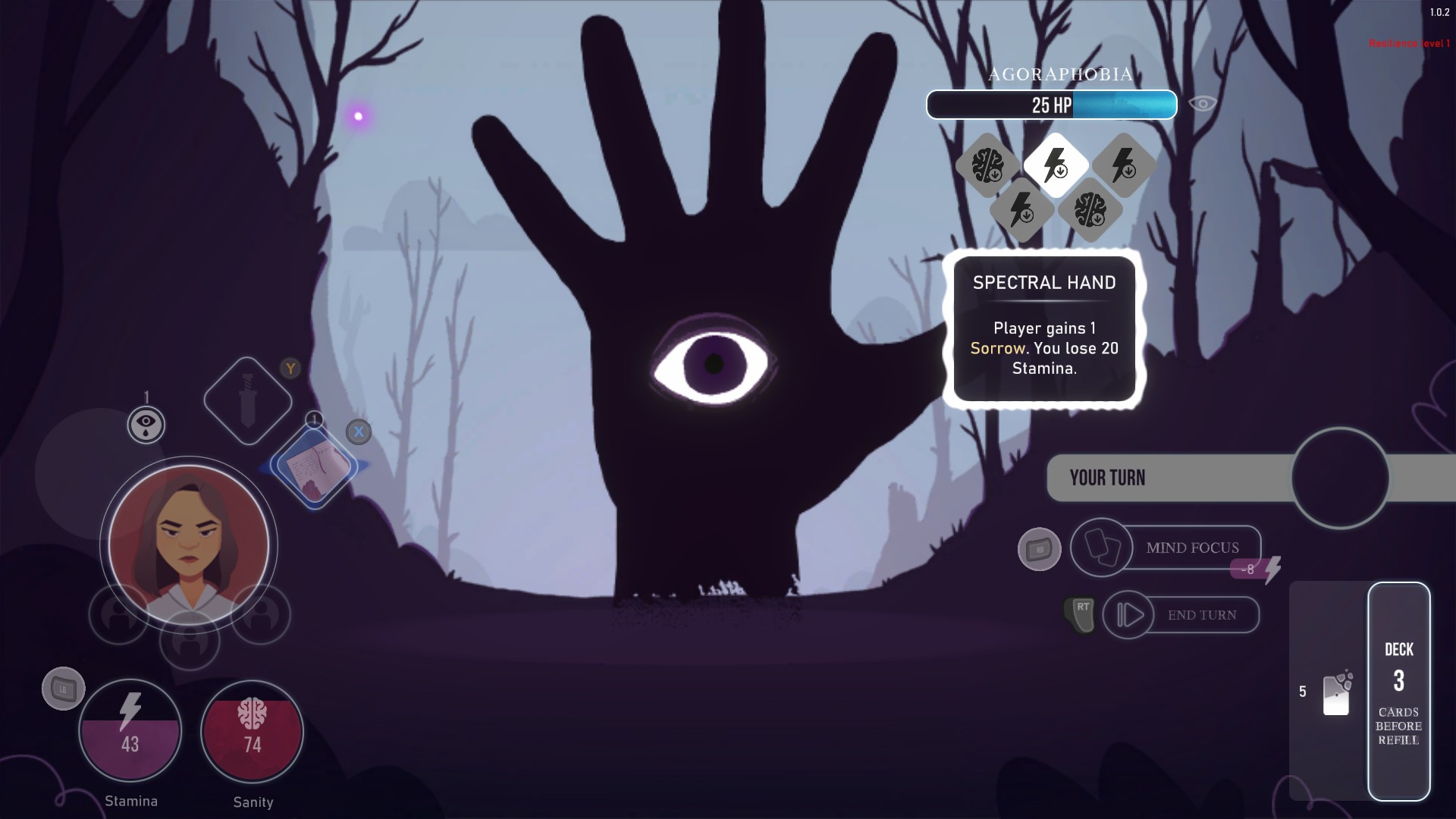
Gameplay
If you’ve ever played games like Slay the Spire you’ll have a good idea of how Neurodeck works. Your goal is to get through a series of encounter with a boss at the end. Beat the boss and you’re victorious. If you lose you’ll have to start over from the beginning of the run, with your progress being reset.
Like any deck building game actually building a good deck is the key to success. Whenever you defeat a phobia, which is this games enemies, you’ll get to pick a new card to put in your deck, or you can chose not to take one. Cards have different synergies and work well with other cards and perks, so just putting random cards in your deck will result in one that can’t take full advantage of any of the cards in it. The card synergies are not too complicated, it’s often pretty clear what works with what. A card that deals bonus damage based on how many cards you have in your hand is of course good in a deck that draws a lot of cards, and if you mix in a perk that deals damage whenever you draw a card you’ve got a pretty solid combo right there. The same card won’t do much if you build a deck without card draw and a lot of cheap cards.
Fights against the phobias are turn-based. Every turn you get 3 actions, and once you’ve used up all your actions the phobia gets to act. The phobias are following a set pattern with their actions and they’ll always be the same for any given phobia. An example would be herpetophobia which spends several turns dealing very little damage but applying defense to itself, and then it unleashes a strong attack, after which it loses all its defense. You can try to power through the defense if you have the right cards, but usually it’s a good idea to spend those turns healing yourself and applying positive effects, and then once the phobia attacks go all out with your damage abilities. Other phobias have other patterns, but they’re all predictable. And if you fail to prepare for the phobias attacks and it manages to get your sanity to 0 you instantly lose. After a fight your sanity is returned to its maximum value, so as long as you’re able to win a fight, no matter how close it was, you’ll be at full strength at the start of the next one.
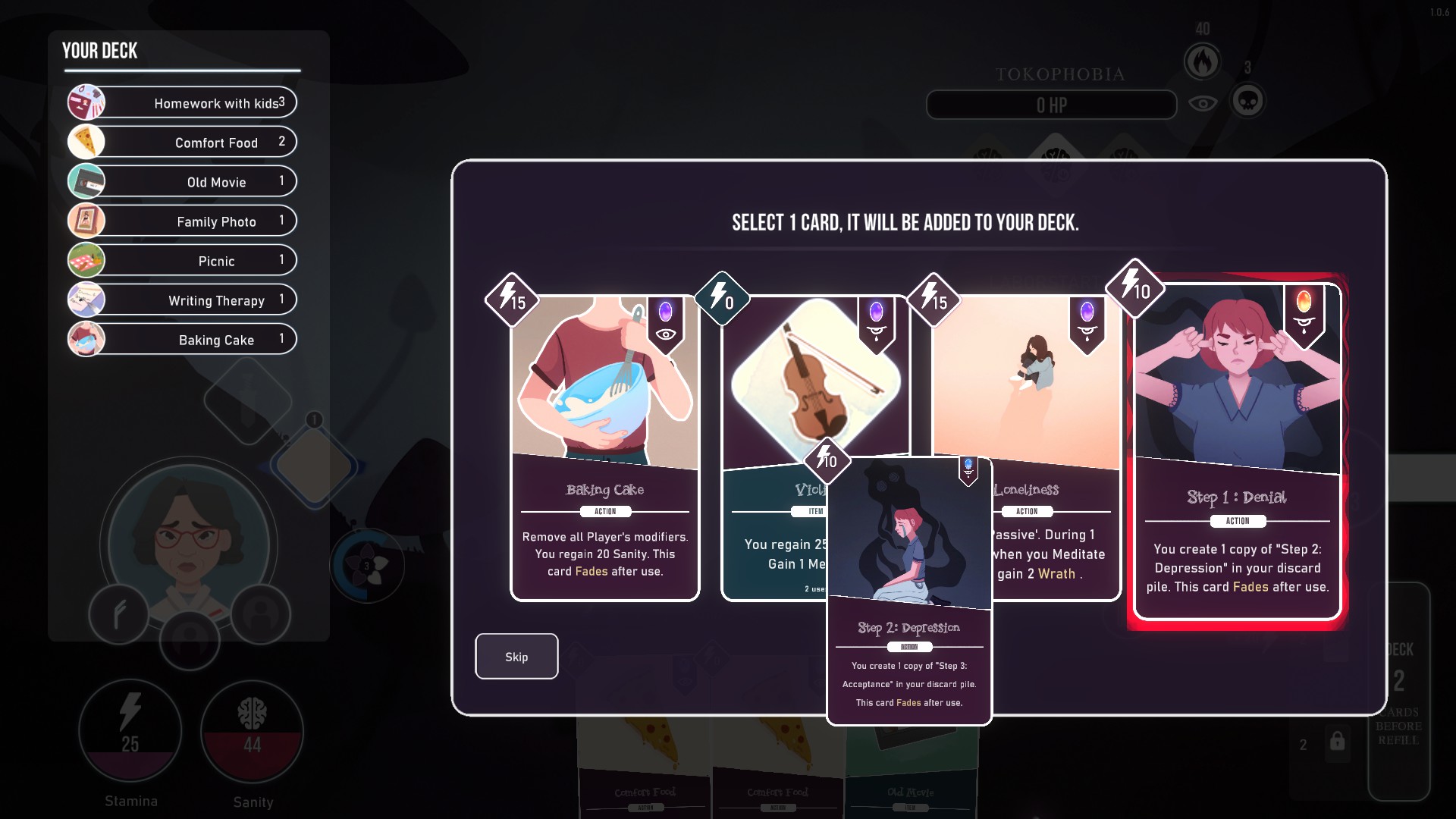
Your actions can be used on playing cards, using items or using your characters special ability. Everything you do costs one action, but there are cards and items that might give you one or more action in return. Cards also have a stamina cost, with stronger cards having a higher cost. Some cards are free and even return stamina to you. Items are a bit special, you can have up to two equipped at any one time and they don’t have an immediate effect, instead you can use the items (at the cost of an action) later. Each item has a limited number of uses, usually one or two. The activation costs no stamina but the card itself might, so they’re a way of paying for a card now and using it later.
The way through the subconscious is a linear path, but every step of the way gives you a choice between at least two different things. When you run into phobias you’re presented with two different ones and can chose which you want to fight, so if your deck is ill suited for a specific one you can avoid it. Every step that don’t have a fight against a phobia let you chose between two or three positive effects. These include the ability to raise your max sanity (health) or stamina, the option to remove cards from your deck, add cards to your deck, unlock new cards that you can find, gain new perks, boosts for the next fight and the ability to transform cards to other cards. Some of these are generally better than others, but they all serve a purpose.
Gaining a new perk is the most involved event, here you’ll answer a series of questions about yourself and depending on the questions you’ll get a different perk. Each set of questions has two different outcomes depending on what your answers were leaning towards. One might be about generosity vs. greed. Once you know what the different perks are you can start to be strategic about how you answer the questions, as different perks fit different decks. Unlocking cards are done in a similar way, though there are more outcomes and the questions are simpler. It’s an interesting way of doing things and gives you some strategic choices.
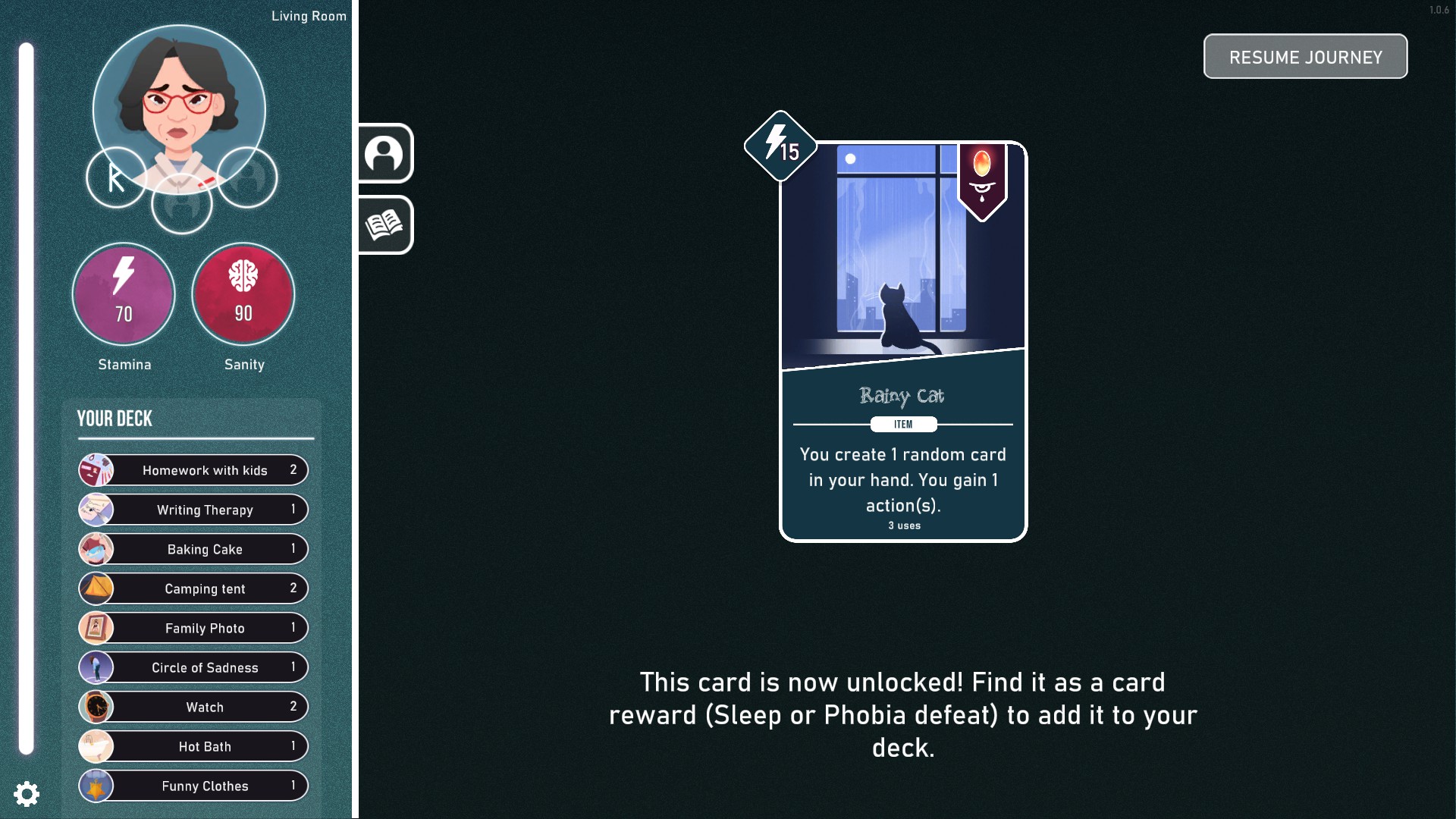
Closing Thoughts
Neurodeck manages to feel like both a rather conventional deckbuilding roguelite and a breath of fresh air in the genre at the same time. Its theme is really what makes it stand out, few other games deal with mental health this directly and the depictions of the phobias are haunting and unsettling. Strip it of its theme though and it’s a pretty conventional game that does not stray too far from the foundation laid by games like Slay the Spire. It’s still a well made game though and the developers have done a good job balancing it, making it feel tough but fair, something that’s not a given for the genre.
The game is not perfect though. My first impressions of it were not the best, it felt a bit slow and less tactical than some of its competitors, but after two rounds that feeling went away. There’s a decent amount of depth to be found here. Many of the cards you get are also supposed to represent certain real life things, but their effects in game don’t always make much sense. I used the backpain card as an example earlier, but there are a bunch of other cards like this. Cards that seem like they should be a hindrance, but somehow are good for you. This mismatch does hurt the games theme a bit, but it’s not so bad that it kills it. Fans of deckbuilding roguelites should definitely check it out. It might not have the replay value of the genres greatest titles, but it’s still a solid game.

